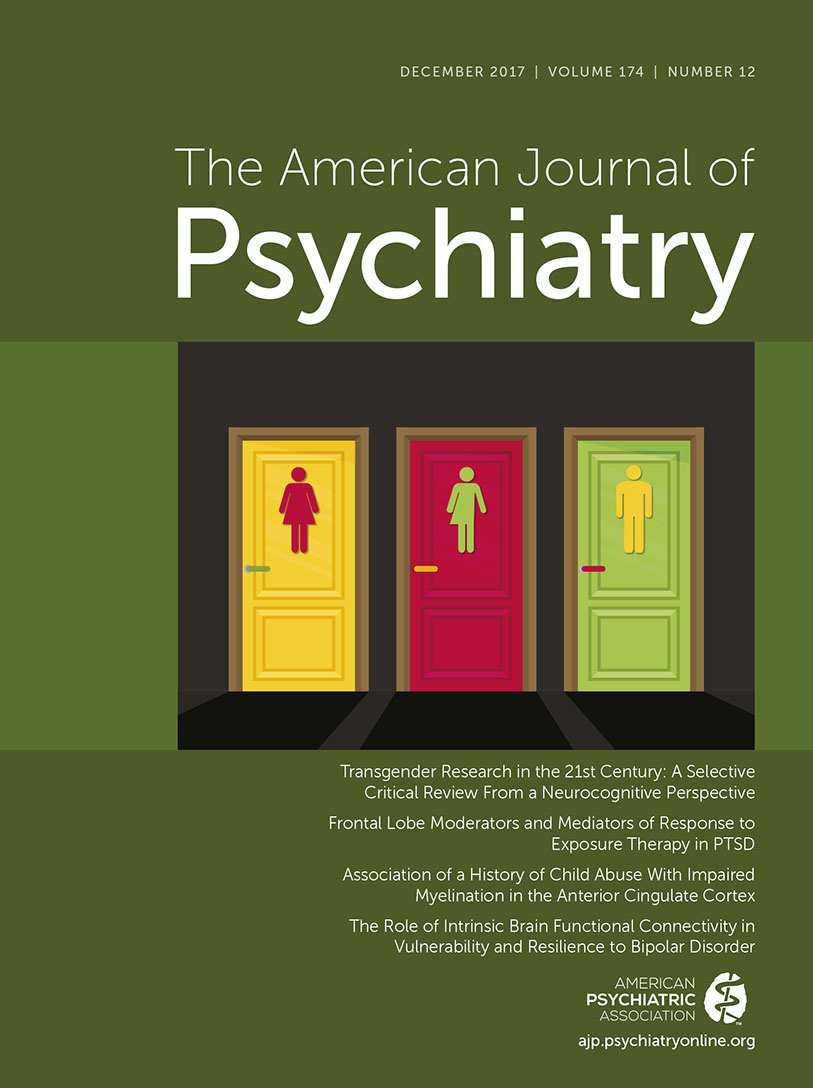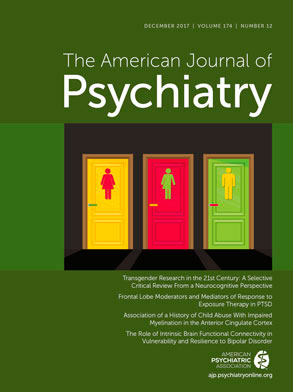One challenge to investigators from the National Institute of Mental Health is to demonstrate that novel therapeutics engage a measurable treatment target. This is a worthwhile goal but an extremely difficult one given how little we understand the mechanistic basis for response to both psychotherapy and pharmacotherapy. There have been some attempts to leverage functional imaging to identify brain circuits that can be targeted for novel therapeutics. Posttraumatic stress disorder (PTSD) is an attractive candidate disorder to study in this light given the well-established model of fear conditioning and extinction learning underlying the basis for prolonged exposure therapy and the known circuits involved in threat appraisal, emotion regulation, and extinction learning, which have been discovered in translational neuroscience. For example, anatomic studies in macaque monkeys have shown that the amygdala is extensively connected with cortical and subcortical areas, including the medial prefrontal cortex, orbital frontal cortex, insula, anterior cingulate cortex, parahippocampal gyrus, and hippocampus (
1). These areas process and regulate negative emotions (e.g., anxiety, fear, and disgust) commonly experienced during exposure to negative emotional stimuli. The activity of the medial prefrontal cortex is controlled by the executive regions of the frontal lobes, the dorsolateral and ventrolateral prefrontal cortices (
2). In PTSD, the current neuroanatomic model involves excessive limbic activity, driven mainly by the amygdala in the setting of insufficient implicit or automatic counterregulatory control from the medial prefrontal cortex, together with insufficient explicit or executive control by lateral prefrontal structures. This model is built on a large body of functional MRI (fMRI) data using both resting-state and task-based measures.
Fonzo and colleagues, in two companion articles in this issue (
3,
4), present the results of a controlled trial of prolonged exposure therapy in individuals with PTSD. The investigators, led by Amit Etkin, used fMRI at baseline and after treatment to test the hypotheses that 1) activity in brain circuits, indexed by both resting-state and task-based fMRI, predicts treatment response, and 2) successful treatment would be associated with decreased limbic reactivity and increased counterregulatory control by prefrontal structures. The investigators focused specifically on tasks that measured different features of emotion regulation that are considered critical for engagement in exposure therapy. The tasks involved both passive conscious and nonconscious (ultra-brief presentation) emotional reactivity, behavioral responses to a task that presents superimposed emotional faces and emotional words that are either congruent or incongruent (emotion conflict task [
5]), and an emotion reappraisal task in which the subject either freely reacts to a negative photographic image or actively attempts to dampen his or her emotional response (
6). One particularly innovative feature of the first of the two reports was that a subgroup of PTSD patients randomized to prolonged exposure underwent simultaneous transcranial magnetic stimulation (TMS) and fMRI to demonstrate by experimental manipulation that the observed circuits moderating treatment response were causally connected (
7). In the second report, a separate sample of healthy subjects was assessed with TMS and fMRI to test for a causal connection between brain areas found to change with treatment.
The PTSD patients (N=36) responded well to exposure therapy, with a 36-point drop in score on the Clinician-Administered PTSD Scale (CAPS), compared with a 7-point drop in the waiting list condition (N=30). In the first report, Fonzo et al. found that PTSD patients who at baseline had greater activation of the dorsolateral and ventromedial prefrontal cortices together with decreased amygdala responses to emotional challenges at baseline were most likely to respond to prolonged exposure treatment. The activity of several other sites and task conditions predicted treatment response, including the frontopolar cortex, the anterior cingulate, and the insula. In the second report, focused on brain changes within subjects in response to treatment, one task and one brain area were linked to treatment response. Specifically, greater increases in activation of the frontopolar cortex and associated connectivity to the ventromedial prefrontal cortex and ventral striatum during the cognitive reappraisal task were associated with better treatment response. Greater increases in frontopolar activation were associated with improvements in PTSD symptoms and overall well-being. The simultaneous TMS and fMRI experiment in a sample of healthy subjects demonstrated functional connectivity between the frontopolar cortex and the ventromedial prefrontal cortex and ventral striatum.
The study has numerous methodologic strengths, including state-of-the-art delivery of prolonged exposure therapy with adherence monitoring by a national expert, an intent-to-treat analysis, a high standard for correction of multiple comparisons in the fMRI data, and the innovative TMS probe distinguishing causal connectivity from correlated activity (
7). The finding of increased activity of the dorsolateral prefrontal cortex to passive emotion reactivity predicting treatment response was replicated because it was assessed in different ways across two different tasks and produced convergent results. The TMS experimental probe to the right anterior middle frontal gyrus (dorsolateral prefrontal cortex) produced reduced activity in the left amygdala, reproducing the pattern found in the baseline fMRI data in the full sample of participants who received prolonged exposure. Furthermore, the extent of amygdala inhibition in the full treatment sample and the subsample tested with the TMS probe at baseline significantly predicted treatment response. This innovative feature makes this a landmark study. Amygdala reactivity was relevant in the treatment prediction but did not change in accordance with treatment response. Treatment did not produce a decrease in amygdala activity, but this may have been a floor effect, since participants with lower amygdala activity at baseline responded the best to treatment.
The results also raise several questions that should be resolved with future work. Several significant interactions of treatment group with activation in various regions of interest emerged because activation at baseline predicted change in CAPS scores in the opposite direction in the active treatment condition compared with the waiting list condition. For example, greater prefrontal activation predicted less symptom improvement in the waiting list condition, which is the opposite of what was found in the prolonged exposure group. In the second report, the investigators speculated that the increase in resting-state entropy, a measure of blood-oxygen-level-dependent (BOLD) signal variability over time, in the frontopolar cortex provides a proxy measure of the improved dynamic functional flexibility afforded by effective treatment. Additional work will be needed to test the hypothesis that resting-state entropy is a robust measure of function in the frontopolar cortex. The TMS probe in healthy subjects showed that frontopolar stimulation deactivated the ventromedial prefrontal cortex and ventral striatum, which is the opposite of what was expected given the pattern of change observed in the treated patients. The probe is nevertheless compelling, because it demonstrates the causal connection in the circuit. However, the inconsistent fMRI outcomes illustrate a primary limitation of the BOLD signal in that it only provides a qualitative measure of brain function. It still is unclear whether increased BOLD activity in a given region of interest is a sign of improved function or represents a compensatory response to inefficient function. Our field remains in need of calibrated signal of true brain activation.
The results suggest that having a healthier brain at baseline, as indicated by increased prefrontal lobe inhibition of amygdala activity, is a positive predictor of response to exposure-based therapy. This is both sobering and challenging because it represents another replication of the finding that greater pretreatment amygdala activity predicts poorer response to exposure therapy (
8,
9). The question of whether an excessive fear response is a predictor of poorer response to exposure therapy is still quite germane (
8). This study supports the need to develop new treatments for PTSD that extend beyond exposure-based treatments (
10).
Another important implication of this study is that the main effect of treatment is to improve frontal lobe function. This appears to be a common goal in many if not all treatments in psychiatry (
11,
12). The authors’ statement that the frontopolar cortex is a transdiagnostic target is a very attractive and testable hypothesis. The authors’ statement that the frontopolar cortex is a transdiagnostic target is a very attractive and testable hypothesis. It is interesting that patients who demonstrate the flash creativity to quickly construct a benign ending to an internal narrative elicited by a grisly photographic image show the greatest treatment gains. It will be fascinating to see if this finding extends to other disorders and involves a mode of cognitive functioning that extends beyond the processing of threat.

